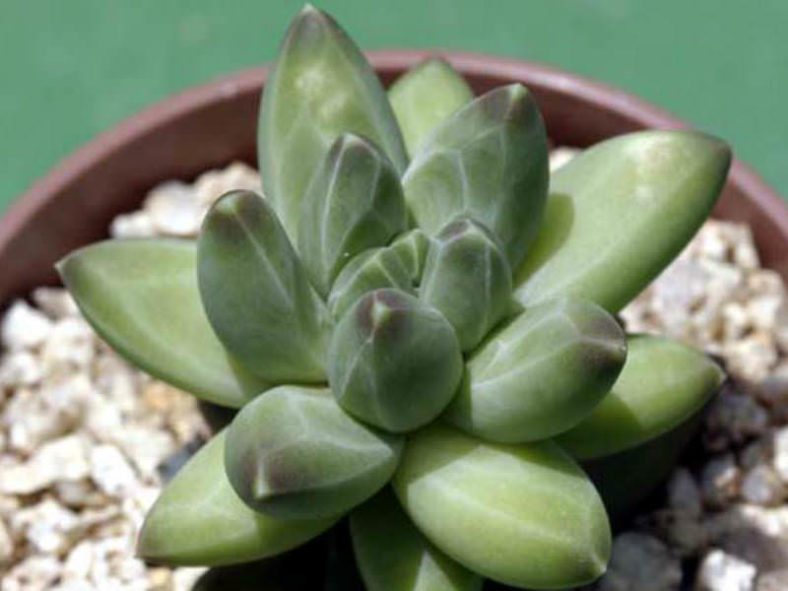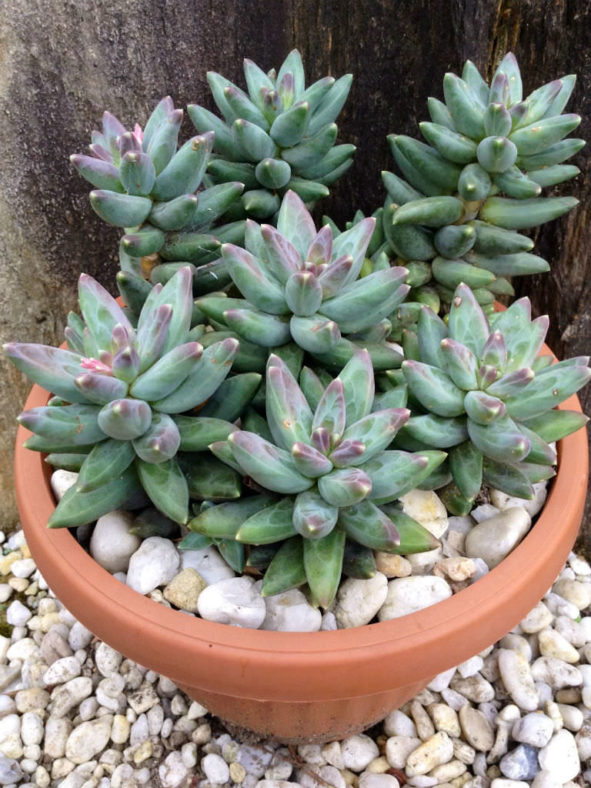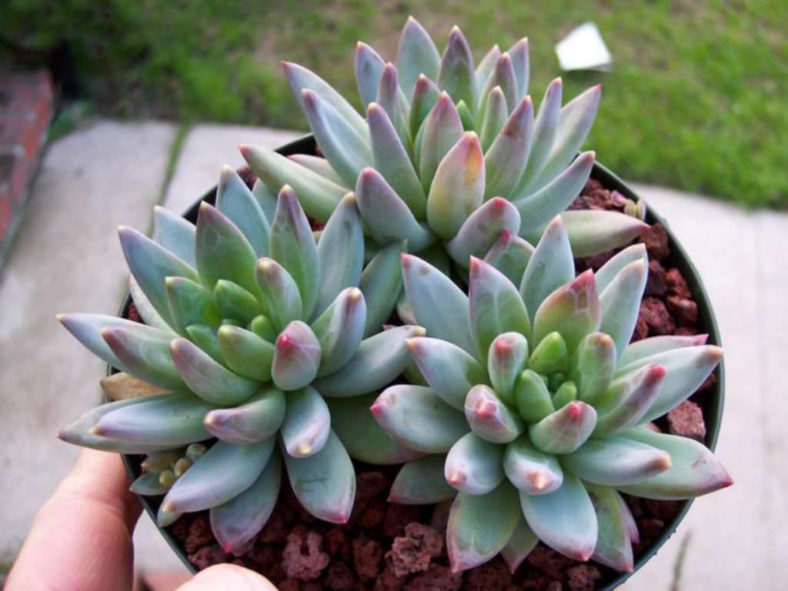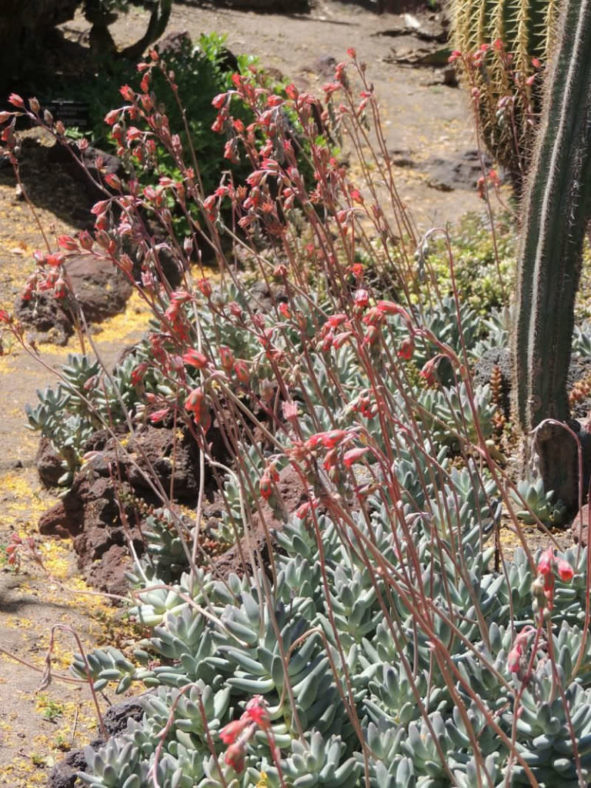Scientific Name
Pachyphytum compactum Rose
Common Name(s)
Little Jewel
Synonym(s)
Pachyphytum compactum var. compactum
Scientific Classification
Family: Crassulaceae
Subfamily: Sedoideae
Tribe: Sedeae
Subtribe: Sedinae
Genus: Pachyphytum
Etymology
The specific epithet "compactum" (pronounced "kom-PAK-tum") means "compact" and refers to the compact nature of this species.
Origin
Pachyphytum compactum is native to Mexico (Hidalgo).
Description
Pachyphytum compactum is an attractive succulent that forms rosettes of 30 to 80, mostly congested leaves. The stems are often basally branched, usually upright, and can grow up to 6 inches (15 cm) tall or 16 inches (40 cm) long if pendent. The leaves are thick, fleshy, tubular, and pointed at the tip, with angular facets left by the pressure of neighboring leaves on the upper surface. They are matted green or, when gently stressed, tinged violet and can measure up to 1.6 inches (4 cm) long and 0.6 inches (1.5 cm) wide.
The flowers appear in late spring. They are barrel-shaped, ranging from red to orange with dark green or violet tips, and are held above the foliage on stalks that can grow up to 12 inches (30 cm) long.

Forms of Pachyphytum compactum
Hybrids of Pachyphytum compactum
How to Grow and Care for Pachyphytum compactum
Hardiness: USDA hardiness zones 9a to 11b: from 20°F (-6.7°C) to 50°F (10°C).
Pachyphytum will not tolerate frost well. Temperatures below 20°F (-6°C) will kill the plant, and temperatures that may go below 45°F (7°C) during an extended period should be avoided. It tolerates high heat and intense sunlight. As with most succulents from the Crassulaceae family, Pachyphytum can tolerate (and even appreciate) poor soil conditions so long as it is well-draining. It can thrive in full or partial sunlight.
Allow the soil to dry before watering, and avoid getting water on the leaves. The plants will require more water in winter as the season begins its active growth period. If you are unsure when to water your plant, watch the lowermost leaves for signs of drying and water them then. Pachyphytum is far more likely to survive under-watering than overwatering. The thick, fleshy leaves will appear wilted and slightly "under-full" when they need water.
One of the most common pests of houseplants is the mealybug, and your Pachyphytum may fall prey to this pest. The symptoms of a mealybug infestation are slowed or stopped growth (though in summer, this is a typical sign of dormancy). If this occurs without apparent cause, remove the plant from the pot and examine the roots or the leaf-stem junctions.
Learn more at How to Grow and Care for Pachyphytum.
Links
- Back to genus Pachyphytum
- Succupedia: Browse succulents by Scientific Name, Common Name, Genus, Family, USDA Hardiness Zone, Origin, or cacti by Genus
Photo Gallery
Click on a photo to see a larger version.


